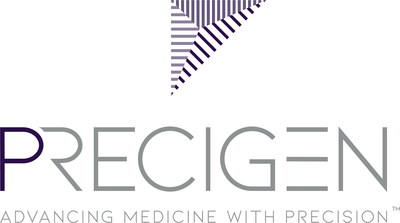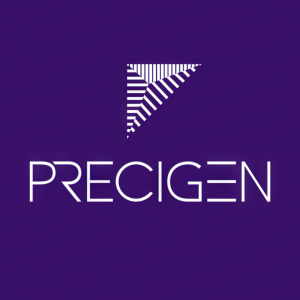Precigen Announces Groundbreaking Pivotal Study Data for PRGN-2012 in Patients with Recurrent Respiratory Papillomatosis in Which More than Half of Patients Achieved Complete Response
Precigen announced positive results from its Phase 1/2 pivotal study for PRGN-2012, a gene therapy for recurrent respiratory papillomatosis (RRP). In the study, 51% of patients achieved complete response, with no surgeries required post-treatment. Additionally, 86% of patients saw reduced surgical interventions. The treatment was well-tolerated, with no severe adverse events reported. The study showed significant improvements in patient quality of life and reduced disease severity. Precigen plans to submit a Biologics License Application (BLA) under an accelerated approval pathway in the second half of 2024, aiming for a potential launch in 2025.
- 51% complete response rate, with no surgeries needed post-treatment.
- 86% of patients experienced reduced surgical interventions.
- Significant improvement in quality of life scores (p < 0.0001).
- Reduction in disease severity as measured by Derkay scores (p < 0.0001).
- PRGN-2012 well-tolerated, no severe adverse events reported.
- Potential to be first FDA-approved treatment for RRP.
- Significant expansion of HPV-specific T cells in responders.
- Median follow-up duration of 20 months; long-term durability unclear.
- No meaningful anti-drug antibody response yet; long-term immunogenicity unknown.
- Potential for high treatment cost and accessibility issues.
- to patients who had multiple surgeries prior, may not generalize to all RRP patients.
Insights
The recent data from the Phase 1/2 pivotal study of Precigen's PRGN-2012 in recurrent respiratory papillomatosis (RRP) patients is noteworthy. From a clinical standpoint, the results are promising, showing a 51% complete response rate and significant reduction in surgeries post-treatment. This is a substantial improvement compared to the current standard of care, which typically involves repeated surgical interventions. Notably, the durability of the responses, with a median follow-up of 20 months, suggests long-term efficacy, which is a critical factor for patients with this chronic condition.
Furthermore, the treatment's ability to induce HPV-specific T cell responses highlights its mechanism of action and potential for broader immunotherapeutic applications. The absence of dose-limiting toxicities and the fact that no adverse events exceeded Grade 2 is particularly encouraging from a safety perspective.
For retail investors, these findings position PRGN-2012 as a potentially revolutionary treatment for RRP, filling a significant unmet need in the market. The rolling Biologics License Application (BLA) submission and anticipated accelerated approval pathway could expedite this therapy's availability, potentially driving substantial revenue growth for Precigen upon approval.
From a market perspective, the data presented by Precigen places PRGN-2012 in a strong position within the biopharmaceutical space. The high complete response rate and significant reduction in surgeries mark PRGN-2012 as potentially the first FDA-approved treatment specifically for RRP. This exclusivity can translate into a competitive advantage and substantial market share within the niche rare disease market.
The anticipated BLA submission and potential accelerated approval in 2024 further enhance the company's growth prospects. Investors should note the strategic timing of commercial readiness efforts, aligning with a potential 2025 launch. Precigen's ability to swiftly move from clinical success to market readiness is critical for capturing early market share and driving revenue. Moreover, the positive safety profile of PRGN-2012 supports its commercial viability, minimizing risk and paving the way for robust adoption.
For investors, this positions Precigen as a company with a promising pipeline, capable of delivering substantial returns, especially if PRGN-2012 gains FDA approval and becomes the standard-of-care for RRP.
– Phase 1/2 pivotal study met the primary safety and efficacy endpoints –
–
–
– PRGN-2012 was well-tolerated with no dose-limiting toxicities and no treatment-related adverse events greater than Grade 2 –
– PRGN-2012 treatment induced HPV 6/11-specific T cell responses in RRP patients with a significantly greater expansion of peripheral HPV-specific T cells in responders compared with non-responders –
– PRGN-2012 significantly (p < 0.0001) improved Derkay and quality of life scores in complete responders –
– RRP is a rare, devastating HPV-mediated chronic disease characterized by growth of benign tumors for which the current standard-of-care is repeated surgeries; if approved, PRGN-2012 has the potential to be the first FDA-approved therapeutic for the treatment of RRP –
– Clinical data associated with favorable safety, strong efficacy, ease of administration, and immunological responses, position PRGN-2012 to potentially be the preferred treatment-of-choice for RRP –
– PRGN-2012 rolling BLA submission, under an accelerated approval pathway, is anticipated in the second half of 2024 –
– Precigen to host webcast event today at 6:00 PM CT / 7:00 PM ET –
"We are thrilled with the results of the Phase 1/2 pivotal study showing more than half of patients were surgery free–Complete Response–and
Pivotal Study Design and Endpoints
The Phase 1/2 clinical study (clinical trial identifier: NCT04724980) evaluated safety and efficacy of PRGN-2012. The study design included an initial 3+3 dose escalation cohort to identify the recommended Phase 2 dose (RP2D). Adult RRP patients who had three or more surgeries in the prior 12 months were eligible for the study. The Phase 1/2 study enrolled a total of 38 patients. Of these, 3 patients received four administrations of PRGN-2012 at 1x 1011 particle units (PU)/dose and 35 patients received four administrations of PRGN-2012 at RP2D (5 x 1011 PU/dose) over a 12 week treatment period via subcutaneous injection.
Primary endpoints included safety and Complete Response rate defined as the percentage of patients who require no RRP surgeries in the 12-month period after PRGN-2012 treatment completion. Key secondary endpoints included HPV-specific immune responses, extent of papilloma growth as measured by Derkay scoring, and quality of life measurement as measured by Vocal Handicap Index-10 (VHI-10).
Patient Characteristics
Baseline patient characteristics of the 35 adult patients included a median age of 49 years (range: 20-88); 20 of the patients were male and 15 were female. Patients had a median of 4 surgeries (range: 3-10) in the 12 months before PRGN-2012 treatment initiation. Average years since RRP diagnosis was 20 (range: 1-65) with 12 and 23 patients with juvenile and adult onset RRP, respectively.
Clinical Efficacy
Primary efficacy endpoint analysis demonstrated that
PRGN-2012 treatment showed significant (p < 0.0001) improvement in anatomical Derkay scores, a tool used for research purposes to quantify RRP severity based on involvement of laryngeal structures, with mean Derkay scores reducing from 9 (range: 5-19) at baseline to 1 (range: 0-5) at 24 weeks post-treatment in patients with Complete Response. Quality of life, as evaluated using the validated VHI-10, significantly (p < 0.0001) improved from a mean of 25 (range: 12-38) at baseline to 7 (range: 0-30) at 24 weeks post PRGN-2012 treatment in patients with Complete Response. PRGN-2012 treatment induced HPV 6/11-specific T cell responses in RRP patients with a significantly greater expansion of peripheral HPV-specific T cells observed in responders compared with non-responders.
TABLE 1: Clinical Efficacy Summary | |||
Total Patients (N=35) | |||
Phase 1 (N=12) | Phase 2 (N=23) | Phase 1/2 Total (N=35) | |
Complete Response No surgeries needed during 12 months post-treatment | |||
Decrease in Rate of Surgery 12 months post-treatment compared to 12 months pre-treatment | |||
Safety
PRGN-2012 treatment was well-tolerated with no dose-limiting toxicities and no treatment-related adverse events (TRAEs) greater than Grade 2 (TABLE 2). All patients received four administrations of PRGN-2012 at the intended dose levels. TRAEs were mostly mild with no treatment-related serious adverse events reported. The most common TRAE was injection site reaction. Other common TRAEs occurring in more than one subject were fatigue, chills, and fever. There was no meaningful anti-drug antibody response with repeat administrations of PRGN-2012.
TABLE 2: Treatment-related Adverse Events Occurring in More Than 1 Patient | ||||
Total Patients (N=38) | ||||
Event | 1 x 1011 PU (N = 3) | 5 x 1011 PU (N=35) | ||
Grade 1 | Grade 2 | Grade 1 | Grade 2 | |
(N, %) | (N, %) | (N, %) | (N, %) | |
Chills | - | - | 25 (71 %) | - |
Fatigue | - | - | 28 (80 %) | 2 (6 %) |
Fever | - | - | 24 (69 %) | - |
Headache | 2 (6 %) | |||
Hyperhidrosis | - | - | 2 (6 %) | - |
Injection site reaction | 3 (100 %) | - | 34 (97 %) | - |
Myalgia | - | - | 9 (26 %) | 2 (6 %) |
Nausea | - | - | 8 (23 %) | - |
Vomiting | - | - | 2 (6 %) | - |
About RRP |
|
|
|
|
|
|
|
|
|
|
![]() View original content to download multimedia:https://www.prnewswire.com/news-releases/precigen-announces-groundbreaking-pivotal-study-data-for-prgn-2012-in-patients-with-recurrent-respiratory-papillomatosis-in-which-more-than-half-of-patients-achieved-complete-response-302161493.html
View original content to download multimedia:https://www.prnewswire.com/news-releases/precigen-announces-groundbreaking-pivotal-study-data-for-prgn-2012-in-patients-with-recurrent-respiratory-papillomatosis-in-which-more-than-half-of-patients-achieved-complete-response-302161493.html
SOURCE Precigen, Inc.









